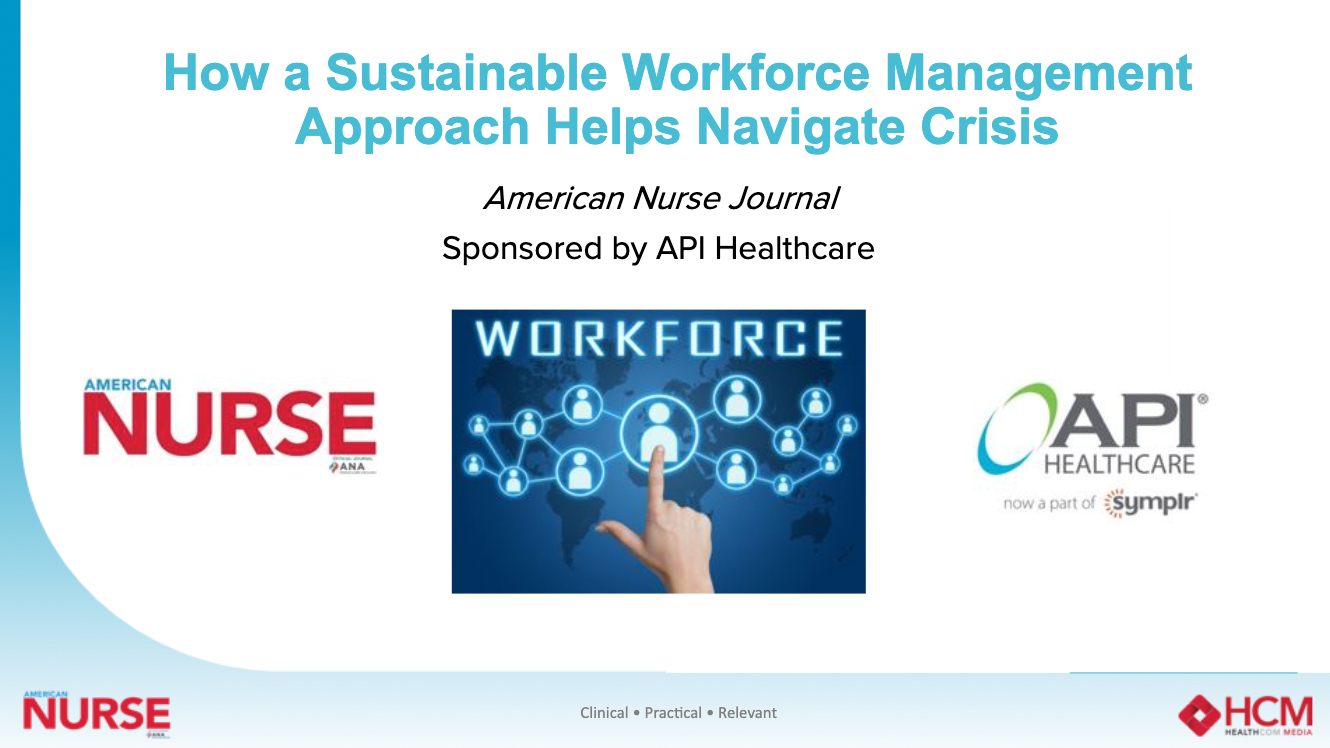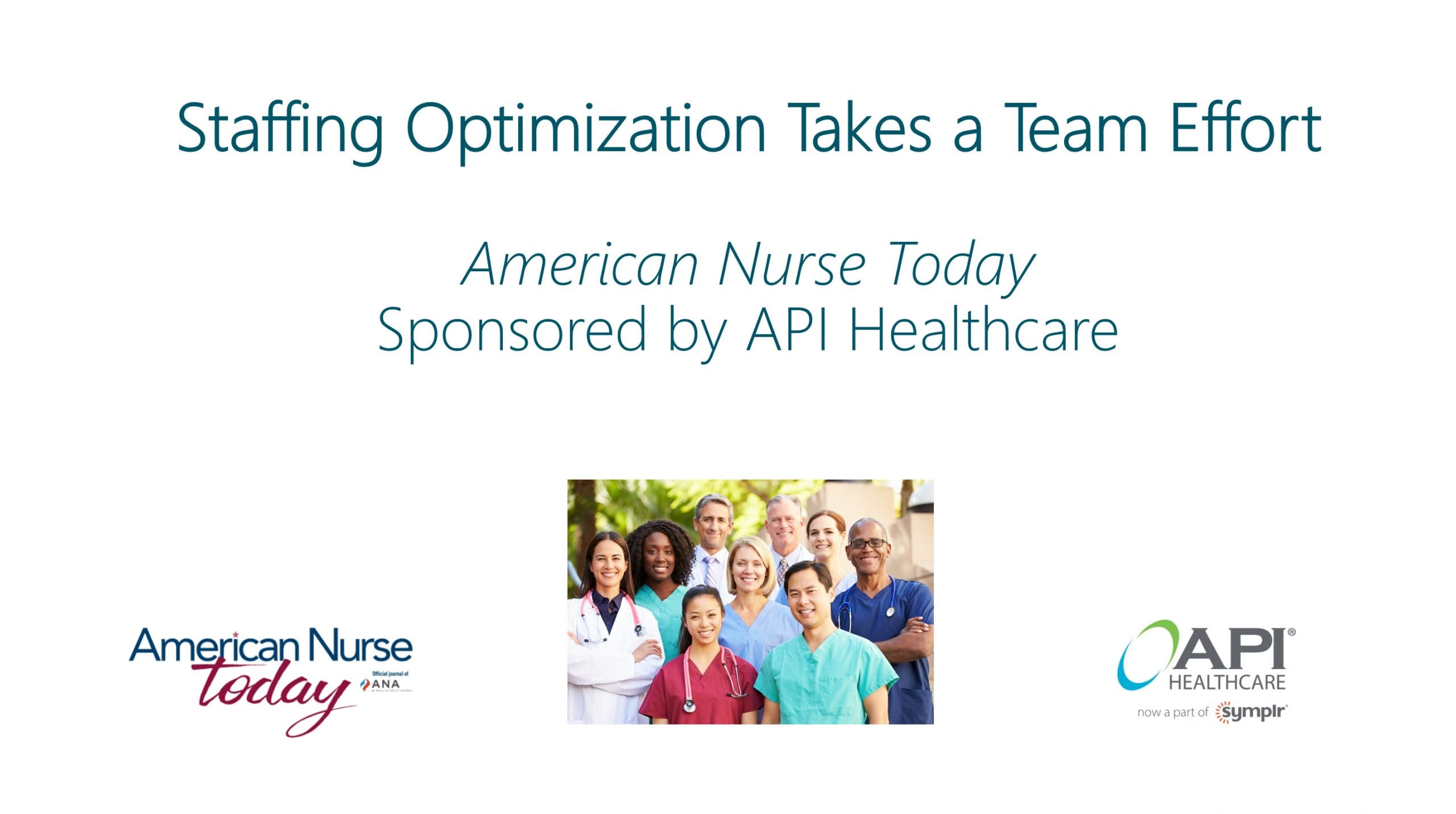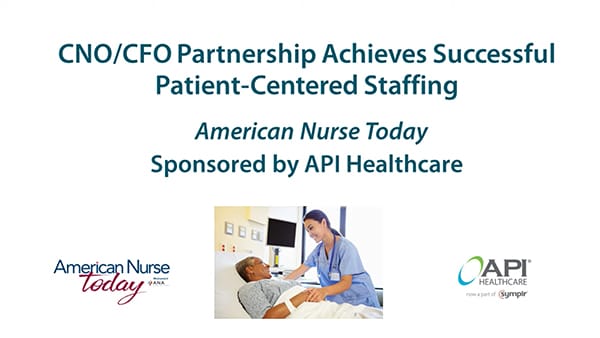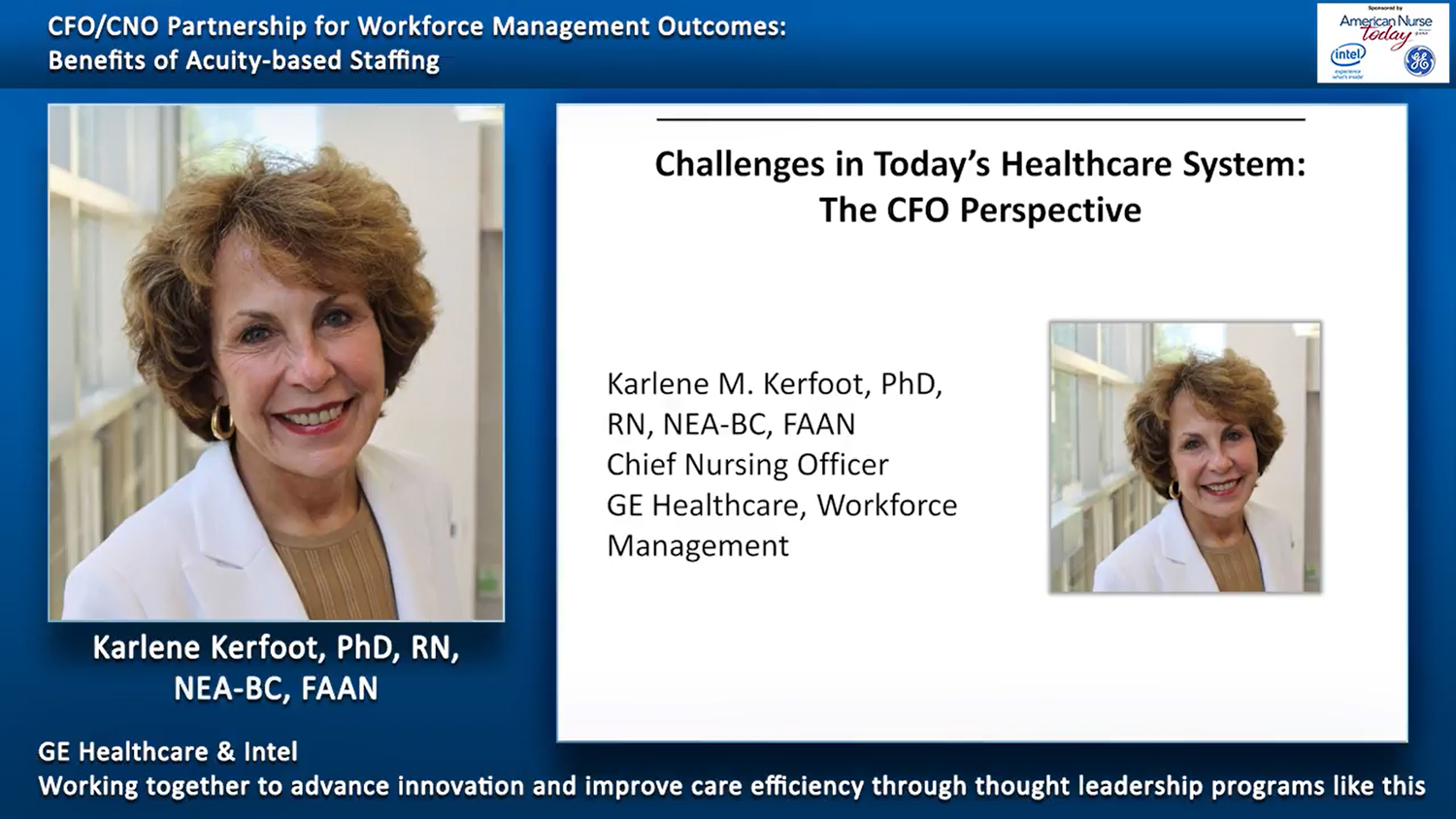Welcome to Best Practices for Workforce Management: A Toolkit for CNOs, a compendium of evidence-based resources created especially for chief nursing officers (CNOs) and nursing leaders to support your unique role in workforce management. The toolkit focuses on today’s most pressing issues, including patient-centered care, a talented nursing workforce, and data-driven financial decisions.
As a nurse executive in practice for more than 30 years, I understand your challenges, and we’ve worked to create a toolkit that meets your needs and is guided by the following key concepts.
Prioritizing workforce management for financial success
The toolkit authors make the point that nursing-driven financial decisions matter. The economic environment of healthcare has been evolving for decades, with recent legislation, such as the Affordable Care Act, fundamentally shifting how and where care is delivered. In this volatile marketplace, where profitability is critical to organizational survival, traditional staffing methods and scheduling systems that don’t focus enough on nurse/patient criteria are no longer effective.
The authors also emphasize that nurse staffing matters. Just as hospitals have evolved, staffing systems have advanced as well; however, adopting innovative approaches, including acuity-based staffing, has been slower. Now, heightened consumerism, diminished resources, and limited availability of healthcare talent are driving prioritization of the workforce as a vital asset rather than a routine expense.
An organization’s view that people matter must be reflected in the philosophy that the workforce and the patient care they deliver are priorities. Adequate staffing levels are critical to daily operations and optimal outcomes such as quality, safety, and satisfaction. For more than 10 years, credible research has demonstrated that inadequate staffing increases costly adverse patient outcomes and staff turnover. Hospitals spend up to $64,000 per registered nurse in replacement costs, which can equate to millions of dollars in excess, avoidable cost each year. Credible, acuity-based staffing and a people matter culture can reduce inadequate staffing and associated stress.
Building the business case
Matching staff resources based on a mix of education, experience, and skill to varying patient acuity levels requires automated, time-sensitive technology. That means patient acuity matters to your ability to limit costs, improve workforce productivity, and address challenging patient needs.
Building a business case for workforce management that reflects up-to-date information and effective measurement includes data-driven methods trusted by the chief financial officer (CFO). A commitment to workforce efficiency and productivity has lasting influence on hospital revenues and community reputation. And the ability to forecast future workforce needs and staffing models based on retrospective data contained in acuity-based staffing software complements strategic planning efforts by delivering more valid and accurate projections.
The toolkit demonstrates how more accurate scheduling models based on patient acuity better meet patients’ needs and manage scarce financial resources. Accurate methods of understanding patient mix, patient acuity, staffing needs, and costs bring significant value to CNOs, CFOs, and hospital administrators who must articulate the return on investment for hiring to accommodate growth or changes to address unexpected staffing needs (mass casualty, flu epidemics, hurricane responsiveness).
Leveraging the data
As hospital average length of stay falls and the inpatient concentration of sicker patients increases, adequate, cost-effective staffing is a financial imperative. The validity of acuity-based analytical models for staffing, scheduling, and predicting patient needs is well-established, so apply the toolkit resources in your organization to drive operational awareness and leverage the continuous stream of data to help you adapt to the changing healthcare landscape.
Lillee Gelinas, MSN, RN, CPPS, FAAN
Editor-in-Chief
lgelinas@healthcommedia.com
Selected references
Avalere Health LLC, for the American Nurses Association. Optimal nurse staffing to improve quality of care and patient outcomes. 2015. indiananurses.org/wp-content/uploads/2016/01/NurseStaffingWhitePaper.pdf
Needleman J, Buerhaus P, Pankratz VS, Leibson CL, Stevens SR, Harris M. Nurse staffing and inpatient hospital mortality. N Engl J Med. 2011;364(11):1037-45.
Jones CB. The costs of nurse turnover, part 2: Application of the nursing turnover cost calculation methodology. J Nurs Adm. 2005;35(1):41-9.













